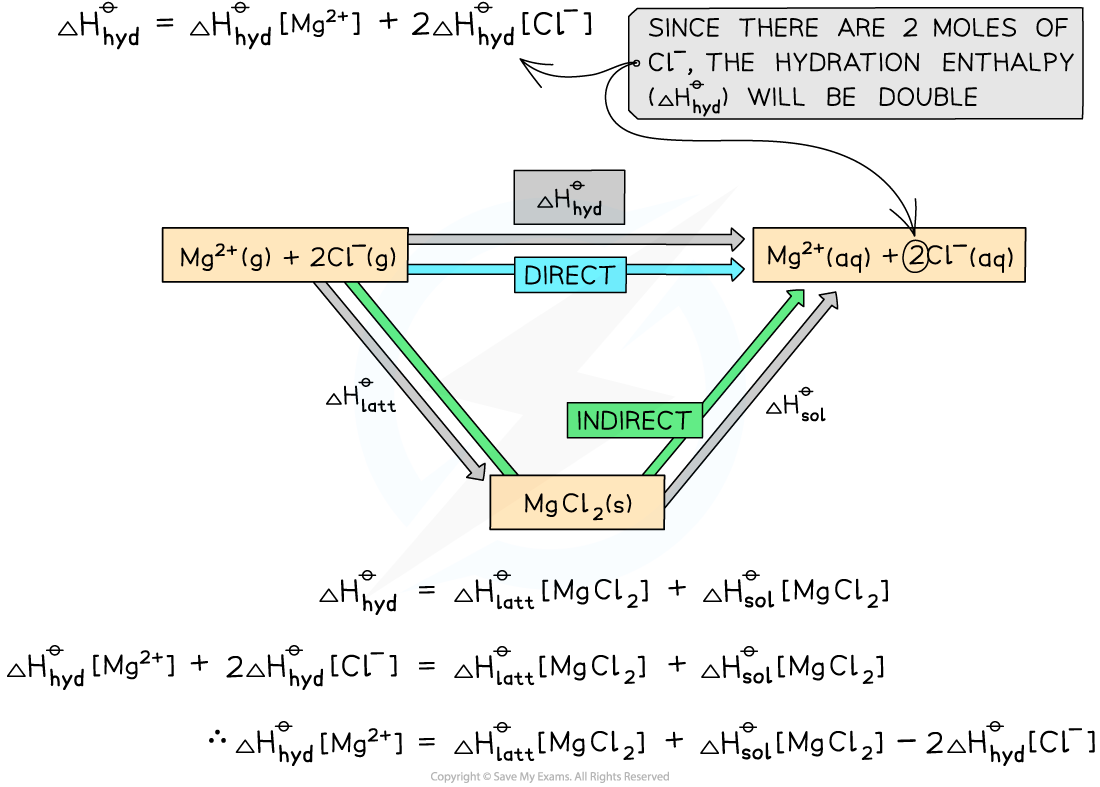Solution & Hydration Definitions
Enthalpy of solution
- The standard enthalpy change of solution (ΔHsolꝋ) is the enthalpy change when 1 mole of an ionic substance dissolves in sufficient water to form an infinitely dilute solution
- The symbol (aq) is used to show that the solid is dissolved in sufficient water
- For example, the enthalpy changes of solution for potassium chloride are described by the following equations:
KCl (s) + aq → KCl (aq)
OR
KCl (s) + aq → K+ (aq) + Cl- (aq)
- ΔHsolꝋ can be exothermic (negative) or endothermic (positive)
Enthalpy of hydration
- The standard enthalpy change of hydration (ΔHhydꝋ) is the enthalpy change when 1 mole of a specified gaseous ion dissolves in sufficient water to form an infinitely dilute solution
- For example, the enthalpy change of hydration for magnesium ions is described by the following equation:
Mg2+(g) + aq → Mg2+(aq)
- Hydration enthalpies are the measure of the energy that is released when there is an attraction formed between the ions and water molecules
- Hydration enthalpies are exothermic
- When an ionic solid dissolves in water, positive and negative ions are formed
- Water is a polar molecule with a δ- oxygen (O) atom and δ+ hydrogen (H) atoms which will form ion-dipole attractions with the ions present in the solution
- The oxygen atom in water will be attracted to the positive ions and the hydrogen atoms will be attracted to the negative ions

The polar water molecules will form ion-dipole bonds with the ions in solution causing the ions to become hydrated
How are enthalpy of solution and hydration enthalpies related?

The relationship between lattice enthalpy, hydration enthalpies and enthalpy of solution
- From the diagram we can see that the relationship is
Enthalpy of solution = reverse lattice enthalpy* + hydration enthalpy
- The hydration enthalpy is the sum of the hydration enthalpies of each ion
- If there is more than one cation or anion, such as in MgCl2, then you must multiply by the appropriate coefficient for that ion
*To be consistent with lattice formation enthalpy







